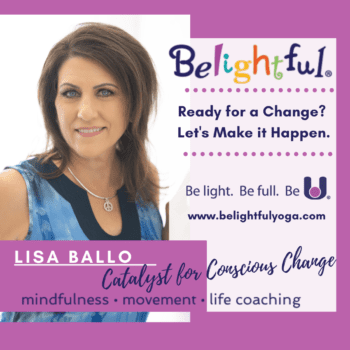Does the term constructive rest pose strike you as an oxymoron? It does have a counterintuitive vibe.
But that’s because we live in a culture of busyness where we get praise and extra credit for always doing, doing, doing. We’re so deeply caught up in the grind that we don’t realize we’re constantly going. So the notion of constructive rest may not make much sense.
Plus, maybe you think you’ll get your rest when you sleep. But rest and sleep are different. And BOTH are essential for physical, mental, and emotional health.
The Importance of Rest
We aren’t going to address the need for sleep here. By now, most of us have had it drilled into our heads that sleep is crucial.
But so too is rest.
Here’s the thing. The human body is well equipped to run at full tilt in spurts. But it wasn’t constructed to operate in constant overdrive. This is why taking a break, even for a very short spell, is essential to help you reset and start anew.
If you never take a break from working or physical exertion, or you don’t allow your brain to rest through meditation or other mindful practice, you won’t have the energy you need to continue. Sure, you can run on fumes for a while. But it’s hardly optimal.
The body is always attempting to return to homeostasis – which is when it repairs and recovers. Taking the time to rest not only improves mood, reduces stress, increases productivity, boosts creativity, and promotes overall well-being, but it also helps the body get back to homeostasis.
There’s no exact formula for what’s the right amount of rest. It depends on several factors. But the benefits of intentional daily rest include decreased blood pressure, relief from chronic pain, stronger cardiovascular and immune health, and a reduction in harmful stress and anxiety.
How Do You Go About Resting?
Rest can look a million different ways to a million different people. For some, it’s passive. It might be sitting down and meditating for a few minutes or stretching out and reading a book. Others might want something more active like a relaxing walk or go to a restorative yoga class.

It doesn’t matter what it looks like. By definition, it’s any behavior where the intention is to increase mental and physical well-being. (And no, this doesn’t include drinking or consuming other mind-altering substances.)
So if you’re brand new to the whole rest concept, we’ve got the perfect place for you to start.
Try Constructive Rest Pose (CRP)
CRP might sound rather exotic. It’s not. It’s pretty basic, actually. Using gravity to allow the hip bones to plug into the hip socket, the pose is an excellent foundation for rebalancing and lengthening the spine. It’s also a go-to position for releasing the psoas muscles.
By paying attention to the placement of the legs, CRP aims to establish the skeleton as the primary support. This, in turn, allows the deep core muscles to release and relax.
In other words, it’s an attentive relaxation position. And it balances the three pillars of the nervous system by enacting alertness (sympathetic nervous system), rest (parasympathetic nervous system), and the gut-brain (enteric nervous system). Now that you know all that it does, you’re probably wondering what it looks like exactly.
How To Find CRP
To practice CRP, lie on your back on a soft but firm surface. Bend your knees and place your feet on that surface.
The feet should be hip-width apart. If they’re too narrow, the knees will fall outward. Conversely, if they’re too wide, the knees will fall inward. Ensure that the feet are far enough away from your buttocks so that the upper and lower leg bones lean into each other. You don’t want them too far away from the buttocks though. Otherwise, the abdominal muscles will be engaged and you’ll notice the weight of the the heels.
In CRP, there should be very little tension in the body. You’ll know when you’ve found the proper placement of the feet because the weight will be balanced equally between the ball and the heel of the foot. There will also be air space behind the knee. Lift your head to look down along the length of your torso. The thighs should be in that parallel position and the weight on your feet should also be balanced between the outside and inside of the foot.
There should be no discomfort in the neck. So if your chin is higher than your forehead, place a folded blanket or towel under the head or neck to bring the forehead a little higher than the chin. It should not be significantly higher though.
Next Step… Relax
Once you’ve found that sweet spot where the energy is balanced, become aware of the natural rhythm of your breath. Notice the support of your soft surface, the ground beneath it, and the earth beneath that. Feel the rise and fall of your chest and belly as you inhale and exhale. And RELAX for as long as it feels needful.
That’s it! You’re in constructive rest pose.
Seeking More Rest In Your Life?

Of course, we make going into constructive rest pose sound like the easiest thing in the world. And while getting into it is not that challenging, you may struggle with relaxing fully into it.
Don’t worry! We’ve got you covered.
With our mobile mindfulness services that include meditation and restorative yoga, we can help you find your way to a daily and fulfilling relaxation practice. Contact us today to get started.



